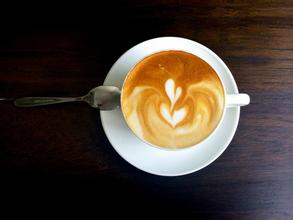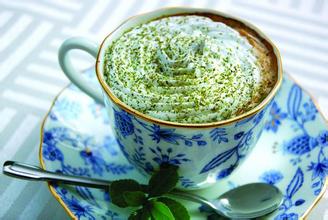Elegant aroma of Columbia Santa Rita Manor Coffee flavor and taste characteristics of boutique coffee beans in the producing area
In his letter from Jamaica in 1815, Bolivar envisioned that when South America was liberated from Spanish colonial rule, New Granada and Venezuela should form a country, named Colombia. In August 1819, Bolivar's Patriotic Army defeated the Spanish colonial army at the Battle of Boyaca and liberated Bogota. As a result, New Granada and most of Venezuela have been liberated. With the consent of the patriotic army and people of New Granada, Bolivar proposed in the Venezuelan Congress held in Angostura in December of the same year that Venezuela and New Granada unite to form a unified country. On December 17, Congress passed a resolution formally establishing the union of the two regions.
Greater Republic of Columbia
Greater Republic of Columbia
The Republic of Colombia. In May 1821, the State of Colombia held a Constituent Assembly in Kukuta, the interim capital, which adopted and promulgated the first Constitution of Colombia on August 20. The Constitution provides for a centralized republic and a series of decrees declaring the abolition of slavery, the liberation of slaves and their children, the prohibition of slave trade, and the equal rights of citizens, with freedom of speech and the press. The meeting elected Bolivar as the first President of the Republic and Santander as Vice President. In May 1822, General Bolivar Sucre led the army to liberate Quito, and Ecuador announced to join the Republic of Colombia.
In 1823, at the request of the Peruvian Patriots and with the approval of Congress, Bolivar led Colombian troops into Peru to fight against the Spanish colonial army.
In 1824, the Colombian and Peruvian coalition forces defeated the Spanish colonial army, and Peru gained independence. During the war with Bolivar's army in Peru, Santander took over as president and presided over the affairs of Colombia. Santander advocated the establishment of a federal regime and United local forces against Bolivar's political proposition of unity and unity. Factional struggles within the Colombian Congress and government have become increasingly acute.
In April 1826, the local rulers of Venezuela, headed by Pais, and those who opposed the new Granada, headed by Santander, demanded the establishment of a separate state. Through the mediation of Bolivar, separatist activities have been temporarily stopped, but internal contradictions and factional struggles still exist.
The main varieties of Colombian coffee are small grains of coffee. Plants are small trees or large shrubs, 5-8 m tall, usually much branched at base; old branches gray-white, nodes dilated, young branches glabrous, compressed. Leaves thinly leathery, ovate-lanceolate or lanceolate, 6-14 cm long and 3.5-5 cm wide, apex long acuminate, acuminate part 10-15 mm long, base cuneate or slightly obtuse, rarely rounded, entire or shallowly wavy, both surfaces glabrous, lower vein axils with or without small pores; midrib raised on both surfaces of leaf, 7-13 on each side of lateral veins; petiole 8-15 mm long Stipules broadly triangular, arising from the tip of the upper part of the young branch conical or awn tip, the tip of the old branch is often protruding tip, 3-6 mm long. Cymes several clustered in leaf axils, each with 2-5 flowers, without a total pedicel or with a very short peduncle; flowers fragrant, with pedicels 0.5-1 mm long; bracts base ±connate, dimorphic, 2 broadly triangular, nearly equal in length and width, the other 2 lanceolate, 2 times as long as wide, leaf-shaped; calyx tubular, 2.5-3 mm long, calyx eaves truncate or 5-denticulate. Corolla white, length varies from breed to breed, generally 10-18 mm long, apically often 5-lobed, rarely 4-or 6-lobed, lobes often longer than Corolla tube, tip often obtuse; anthers protruding from Corolla tube, 6-8 mm long; style 12-14 mm long, stigma 2-lobed, 3-4 mm long. Berries broadly elliptic, red, 12-16 mm long, 10-12 mm in diameter, exocarp dura, mesocarp fleshy, sweet at maturity; seeds raised abaxially, ventral flat, longitudinally grooved, 8-10 mm long and 5-7 mm in diam. The florescence is from March to April. [2]
Planting environment editing
The suitable climate in Colombia provides a real "natural pasture" for coffee. Coffee trees in Colombia are mainly cultivated in the Andes, on steep slopes about 1300 meters above sea level, where the annual temperature is about 18 degrees Celsius, annual rainfall is 2000 to 3000 millimeters, latitude 1 °- 11 °15 north, longitude 72 °- 78 °west, the specific range of elevation is more than 2.000 meters. A special combination of factors, latitude, altitude, soil, plant origin of species and varieties of coffee production in Colombia's coffee growing area, rain patterns produced by the climate of the coffee growing area and tropical convergence, changing topography, luminosity, favorable temperature range throughout the year, moderation and Rain Water's distribution And include some common cultural practice areas in the process of selective logging and transformation, including washing and drying. Very suitable for the growth of coffee, mild climate, humid air, and can be harvested regardless of season. This is why Colombian coffee is of high quality. Colombia has three Codiera mountains running north and south, right into the Andes. Coffee is grown along the highlands of these mountains. The mountain steps provide a diverse climate, where the whole year is the harvest season, and different kinds of coffee ripen at different times. And fortunately, unlike Brazil, Colombia doesn't have to worry about frost. About 2.7 billion coffee trees have been documented in Colombia, 66 per cent of which are planted in modern plantations and the rest on small traditional farms.

Important Notice :
前街咖啡 FrontStreet Coffee has moved to new addredd:
FrontStreet Coffee Address: 315,Donghua East Road,GuangZhou
Tel:020 38364473
- Prev

Sweet aftertaste of Panamanian Ireta Manor Coffee Flavor taste the characteristics of fine coffee in the manor area
The Panamanian flag was launched on November 3, 1904. The flag is rectangular and the ratio of length to width is 3:2. The flag consists of four rectangles of white, red and blue. White symbolizes peace; red and blue represent the former Panamanian Liberal Party and the Conservative Party respectively, and they are also symbols of the two parties' United struggle for the interests of the nation. The blue star on the white background on the upper left represents loyalty and integrity, and the red star on the white background on the lower right represents
- Next

Introduction to the characteristics of coffee flavor and taste of Costa Rica's Saint Roman Manor
It is called the legislative assembly, the unicameral system, the barber assembly, the exercise of legislative power and other important functions and powers. major government decisions need to be examined and approved by the legislative assembly, which is called the first power of the state. it is the highest legislature in the country, composed of 57 members. Members are directly elected by voters for a term of four years and are non-re-elected. The current legislative assembly was formed in May 2010, of which the new session was established on February 2, 2014.
Related
- Does Rose Summer choose Blue, Green or Red? Detailed explanation of Rose Summer Coffee plots and Classification in Panamanian Jade Manor
- What is the difference between the origin, producing area, processing plant, cooperative and manor of coffee beans?
- How fine does the espresso powder fit? how to grind the espresso?
- Sca coffee roasting degree color card coffee roasting degree 8 roasting color values what do you mean?
- The practice of lattes: how to make lattes at home
- Introduction to Indonesian Fine Coffee beans-- Java Coffee producing area of Indonesian Arabica Coffee
- How much will the flavor of light and medium roasted rose summer be expressed? What baking level is rose summer suitable for?
- Introduction to the characteristics of washing, sun-drying or wet-planing coffee commonly used in Mantenin, Indonesia
- Price characteristics of Arabica Coffee Bean Starbucks introduction to Manning Coffee Bean Taste producing area Variety Manor
- What is the authentic Yega flavor? What are the flavor characteristics of the really excellent Yejasuffi coffee beans?

